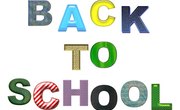Reading Recovery is a program that helps struggling first-graders improve their reading and writing skills. Students scoring low on assessments are pulled out of their regular classrooms to work one-on-one with a teacher who has been trained in the Reading Recovery program. The goal of this intense tutoring is to help the students catch up early in their school years before they get too far behind their classmates. This program is not available at every school, nor can individual teachers use Reading Recovery. Only schools that have received Reading Recovery training for teachers and administrators can implement the program.
Obtain a college degree or state certification in elementary education. To become a Reading Recovery teacher, you must first be a teacher (you cannot get a degree in Reading Recovery specifically). A college degree in elementary education gives you a good foundation in teaching young students, which is important because Reading Recovery is a program for first-graders.
Get a reading certification. This is not a requirement for the Reading Recovery program; however, it is recommended that you have a strong background in teaching children to read. Even if you do not pursue a degree, consider taking courses in reading education at a university.
Teach for at least two years. Before you can be accepted into Reading Recovery training, you must have taught for two years. Teachers successful in the classroom are more likely to be chosen to become Reading Recovery teachers since the program has high standards and requires a strong commitment to continual training.
Talk to your principal about receiving training. The principal decides which teachers are selected for the Reading Recovery program. If you are not employed at a Reading Recovery school, you can either try to get your school to adopt the program or seek employment at a Reading Recovery school.
Commit to the Reading Recovery training process. According to the Reading Recovery website, it takes more than one year to complete your initial training. After this, continual monitoring and professional development are required.
Once you've met all of the requirements, you will be a highly-trained reading teacher, ready to help first-graders learn to read.
Each state sets its own standards for additional certifications. Some states allow you to pass a test in the area you wish to gain certification; other states require you to return to college for additional coursework. If this is the case, it often makes sense to add reading certification in with courses for a master's degree. The University of Kentucky has a website linking to each of the state's teacher certification requirements.
Warning
Do not undertake Reading Recovery training unless you are certain it fits your interest and skills. Your school has to pay for your training, which can be expensive.
Related Articles
References
Tips
- Each state sets its own standards for additional certifications. Some states allow you to pass a test in the area you wish to gain certification; other states require you to return to college for additional coursework. If this is the case, it often makes sense to add reading certification in with courses for a master's degree. The University of Kentucky has a website linking to each of the state's teacher certification requirements.
Warnings
- Do not undertake Reading Recovery training unless you are certain it fits your interest and skills. Your school has to pay for your training, which can be expensive.
Writer Bio
Kerri Cox is an elementary librarian and former high school English teacher. She began writing for Internet publications in 2009. Her informative articles, focusing on education and parenting, have been published on eHow.com. Cox has bachelor's and master's degrees in education from Missouri State University.











